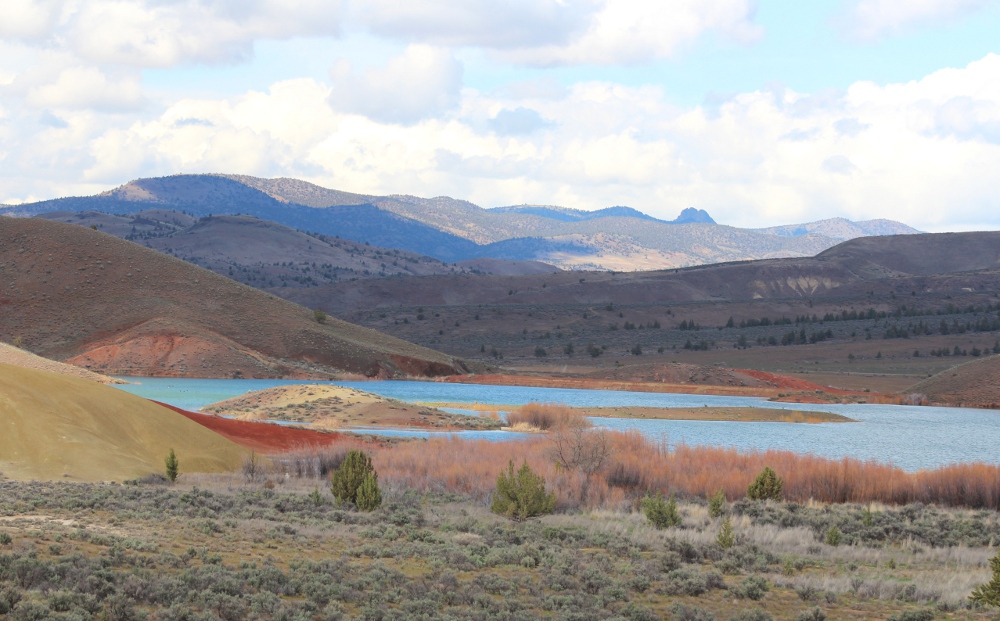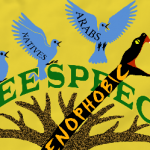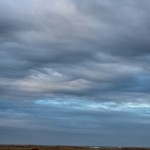
When Emma-Jayne Saanen talked last month about her relationship with water, it got me to thinking about my own connection to it. I grew up near creeks and streams, and fishing in ponds, and although I didn’t go to any ocean until I was in my late twenties, the Pacific has inspired child-like joy and wonder in me every time I visit it. I’m even happy splashing around a swimming pool or soaking in a hot tub, and my daily shower is one of life’s luxuries. I’m fortunate to have lived in places with uniformly clean, good-tasting tap water, and I never developed a bottled water habit.
So I suppose my relationship to water is overall pretty positive. Maybe it’s my evolutionary inheritance; supposedly we humans are attracted to places with water because in the savannahs we evolved in, knowing where the water is was crucial to our survival. But then again, it could also just be the culmination of a lot of positive experiences with water, too.
However, there’s a more immediate connection to this classic element. All living beings need some amount of water in their systems, whether through drinking, or through food, or through living immersed in this matrix. Creatures in the deserts evolved to be more conservative with the water they get, but even they can die of dehydration.
And that need for water is a reminder that we came from the oceans. Our ancestors spent their entire lives, way back when, immersed in it, soaked in water within and without. Their bodies maintained a balance between the water inside of them and the water that surrounded them, and so it was for billions of years. Only a little less than half a billion years ago did the first living beings make their way onto land, and the plants and fungi had us animals beat by a mile; going farther more quickly than we could follow. But we joined them in due time.
This was no overnight change. The first proto-amphibians and true amphibians—and even amphibians today—needed to stay close to water so they wouldn’t dry out. They hadn’t quite perfected a skin that would be a suitable container for the water they carried with them from the oceans and, later, fresh waters. It wasn’t until reptiles evolved that there were animals that could survive outside of the water entirely, needing only to drink now and then to replenish the inner stores.
Just as we are descendants of older creatures, so the water inside of us can be traced back to the oceans life came out of. The molecules may be different, but every land-living female being that has laid eggs or given live birth has imparted a bit of her own hydration to her young, and that chain of water can trace all the way back to fully water-dependent ancestors. We even maintain a certain amount of salinity in the fluids in our bodies, the blood and cell fluid and saliva and more. A lack of salt will kill us as surely as a lack of water.
We never really did leave the ocean behind completely. The tides still flow in and out of us, though at a pace not necessarily regulated by the moon. And one of our most primitive drives is to connect with it again, whether through the streams and rivers that eventually flow to it, or to lakes and ponds created by rain that was first drawn up from the ocean’s surface into the sky.
Just as I can connect with Earth through the bones and flesh of my body, Air through the oxygen and other gases in my cells and in my lungs, and Fire through my metabolism and the heat it creates, so I can easily connect with Water through the remnant oceans in my veins and tissues. This is why I’ve never felt that I couldn’t connect with one element more easily than another—they’re all there, literally at my fingertips, and throughout the rest of me besides.
And so I maintain a good relationship with water, within and without, every day of my life.
















